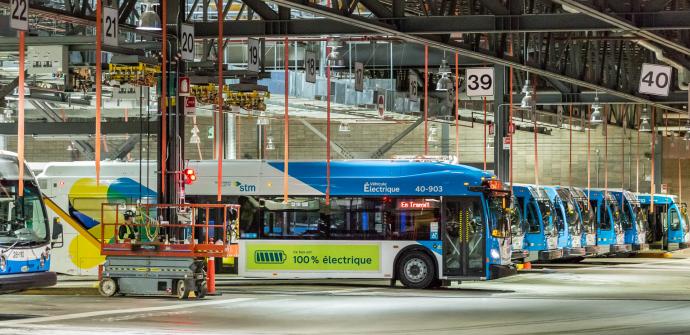The STM gives a sneak peek on an important worksite ongoing at the Stinson bus garage for the electrification of the bus network.
Montréal, November 18, 2020 – Despite the pandemic, the STM is forging ahead with several major projects that will have a direct impact on the mobility of Montrealers for years to come. These include the electrification of the surface network, one of the STM’s strategic priorities. By 2025, the agency will purchase only fully electric vehicles and is currently conducting major adaptation work on its facilities to that end.
An immense worksite was set up in January 2020 at the Stinson bus garage, in the Saint-Laurent borough, and remains active today. In a few months, this is where the STM will house and recharge 30 long-range electric buses made by New Flyer. Integrating these buses is a tall order, as the STM has never operated long-range electric vehicles before. The Stinson bus garage will also be one of the first in Canada to integrate bus charging via inverted pantographs, nine of which will be installed on the ceiling inside the building. This ingenious solution was chosen to maximize the available space and ensure efficient, flexible recharging operations.
A well-oiled machine
Coordinating all the work that needs to be done at this site requires impeccable planning and a high degree of cooperation from all parties involved. Each has an important role to play at exactly the right moment, whether it’s the charging equipment supplier, the electrical contractor, the STM’s multidisciplinary teams or the electric bus supplier. And the worksite doesn’t get in the way of the garage’s normal operations, which are being maintained as the work goes on.
The project in numbers
- 9 pantographs
- 44 charger plugs
- 2 portable chargers for the maintenance area
- 53 satellite units connecting the buses to the chargers
- 50+ kilometres of electric and fibre optic cables
Looking toward the future
By about winter 2021—once the work is complete, testing has been conducted and the 30 buses have been delivered and put into circulation—this project will provide the STM with valuable insights for ensuring an efficient transition to larger-scale electrification. It presents an opportunity to assess driver and maintenance staff training, operational costs of the vehicles and their performance in a variety of conditions, customer feedback, the charging process—perhaps even new ways of arranging vehicles by charge status and order of deployment to optimize the use and planning of the electric bus fleet. By examining these and many other new factors, the STM will be able to create optimal conditions going into 2025.
Photos
Credit : STM/Julien Perron-Gagné
High-res images available on demand
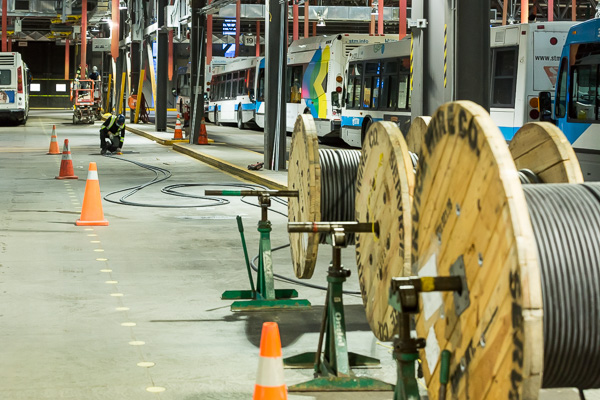 Over 50 kilometres of cabling were used during the work, including electric, fibre optic and network cables.
Over 50 kilometres of cabling were used during the work, including electric, fibre optic and network cables.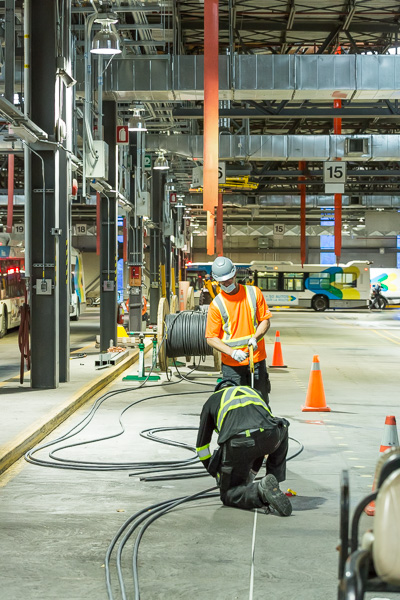
Pictured here, a worker measures and runs cables through conduits between the satellite units.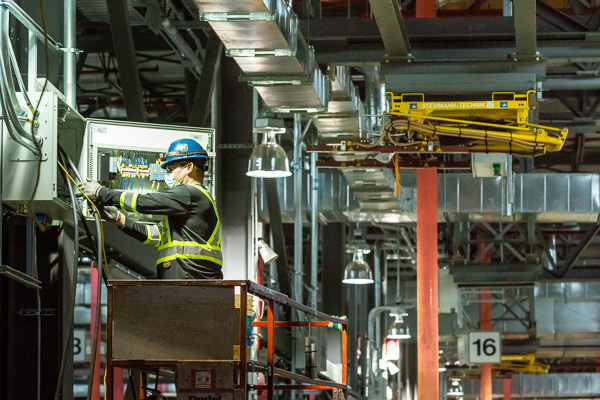
A worker measures and runs cables through conduits between the satellite units.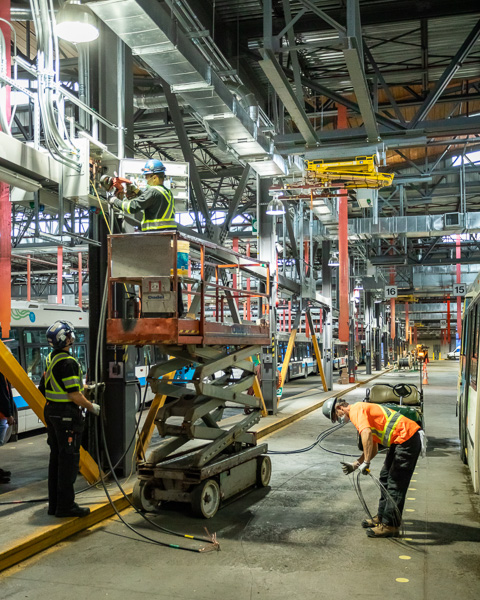
The cables have to be measured, cut and hooked up to the unit.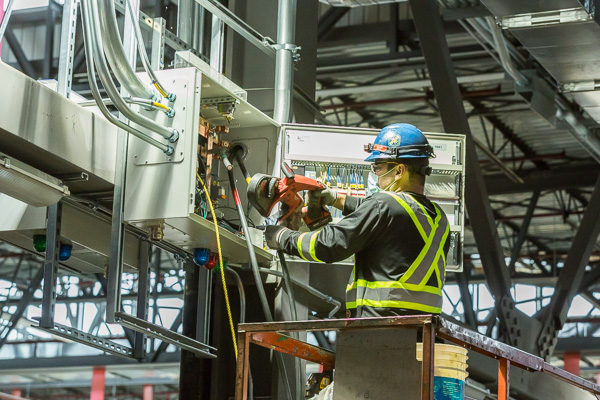 The satellite units connect the buses to the chargers. Connection cables run between the units and the buses.
The satellite units connect the buses to the chargers. Connection cables run between the units and the buses.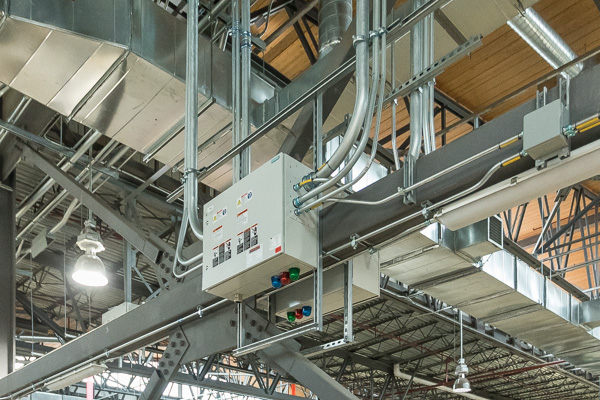 There are two to three satellite units per charger for a total of 53.
There are two to three satellite units per charger for a total of 53.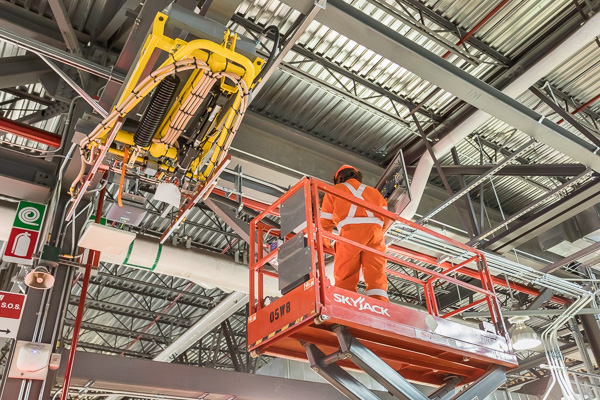
To date, eight pantographs have been installed at the Stinson bus garage. There will be nine in total. We have already installed two outdoor pantographs by Angrignon and Square-Victoria–OACI métro stations. However, this time is different as the pantographs have to be installed indoors. And inside a bus garage, there’s always something going on! We are one of the first transit agencies to install pantographs inside a garage.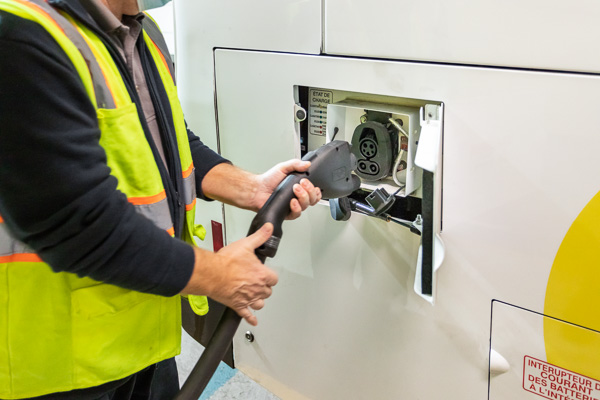
Forty-four of these plugs have been installed, in addition to two mobile chargers for the maintenance area.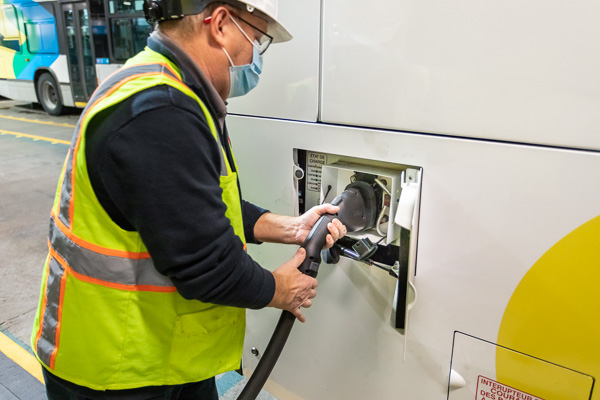 The worker pictured here is wearing some protective equipment, but don’t worry—that’s because of health and safety rules regarding the worksite, ongoing tests and, of course, COVID-19.
The worker pictured here is wearing some protective equipment, but don’t worry—that’s because of health and safety rules regarding the worksite, ongoing tests and, of course, COVID-19.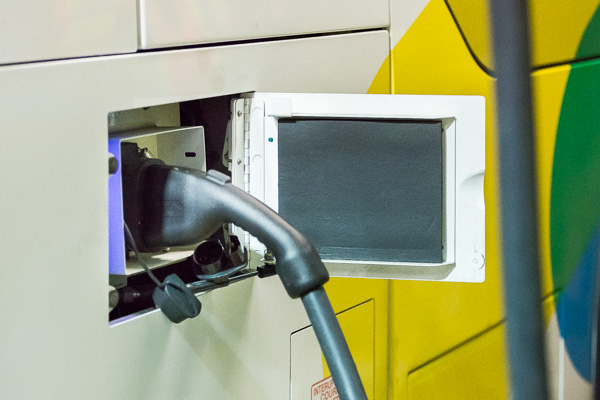 The charger plugs are very safe and can be handled without special gear.
The charger plugs are very safe and can be handled without special gear.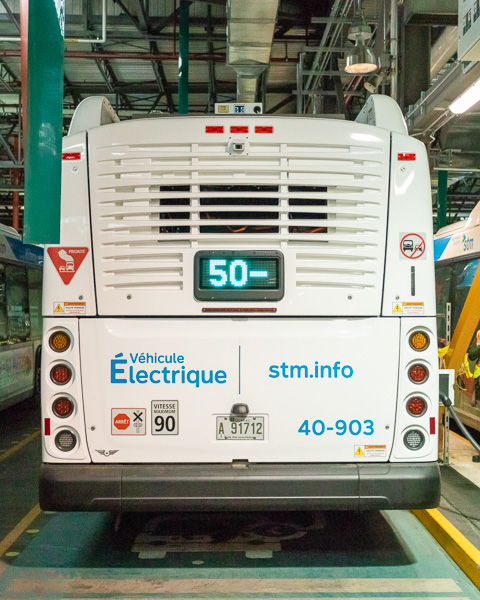
Here, a charge indicator shows that the bus is less than 50% charged.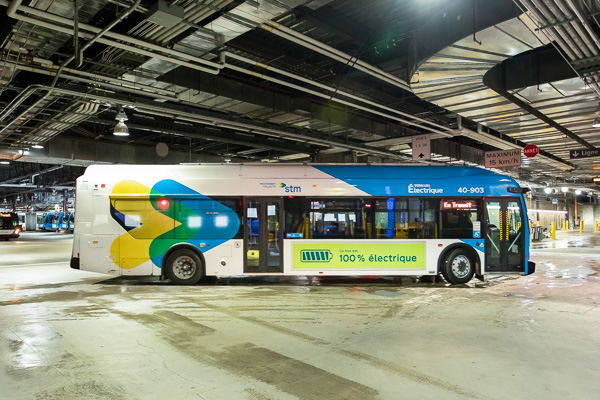 We are continuing tests on the New Flyer buses.
We are continuing tests on the New Flyer buses.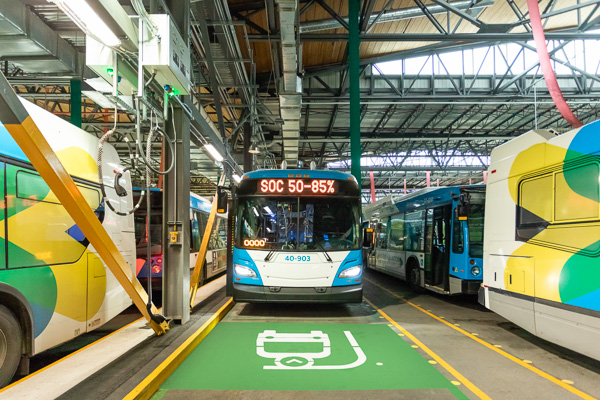 Bus garage electrification also requires reorganizing the space. At the Stinson bus garage, we have equipped four aisles and four spaces for immobilized buses with electrical equipment and made four spaces available in the maintenance area.
Bus garage electrification also requires reorganizing the space. At the Stinson bus garage, we have equipped four aisles and four spaces for immobilized buses with electrical equipment and made four spaces available in the maintenance area.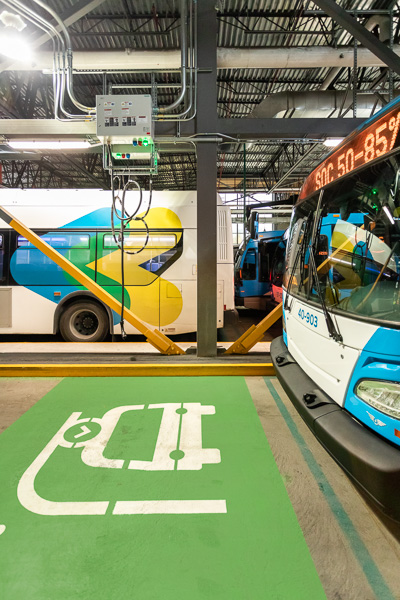
The four electrically equipped aisles are marked in green with a symbol indicating their main function: electric bus charging!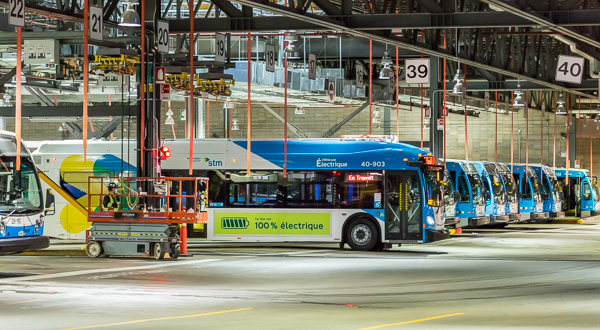 Using a supervisory control and data acquisition (SCADA) system, we can view and monitor the buses’ charge statuses remotely and make sure that buses are recharged as needed.
Using a supervisory control and data acquisition (SCADA) system, we can view and monitor the buses’ charge statuses remotely and make sure that buses are recharged as needed.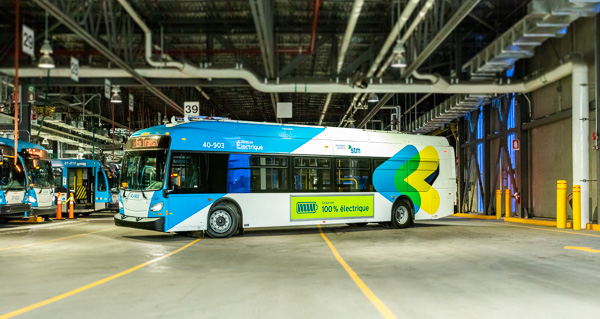
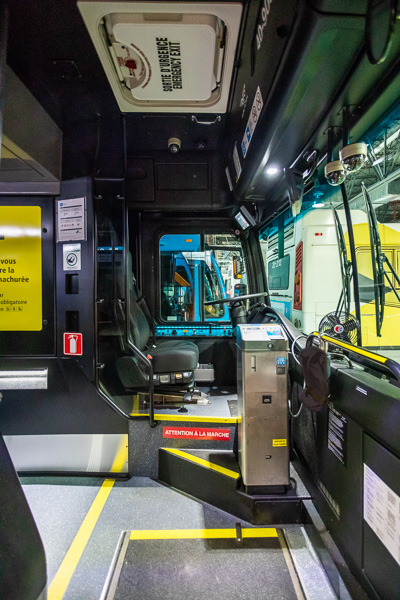
For bus drivers and maintenance employees, the electric buses are a new kind of vehicle and a new work environment. They will receive training on both driving and recharging this new type of bus.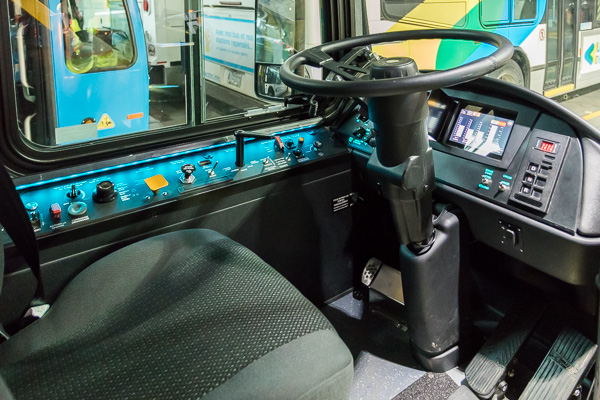
A new work environment.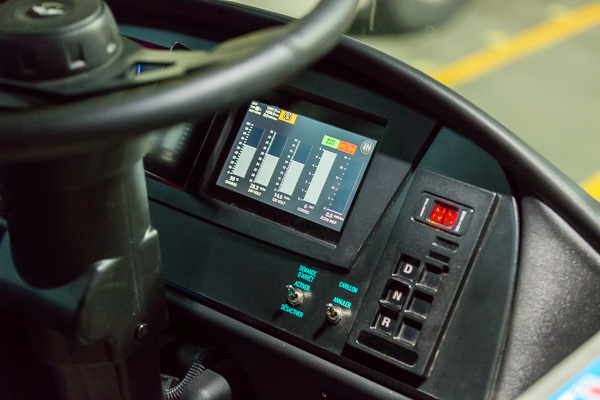
The new dashboard display screens show a lot of information: battery charge status, low-voltage (24V) battery voltage, 12V circuit voltage, operational state of different battery groups and real-time consumption.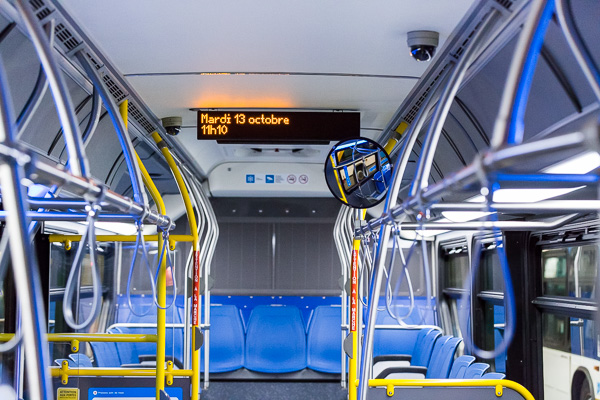 New Flyer bus.
New Flyer bus.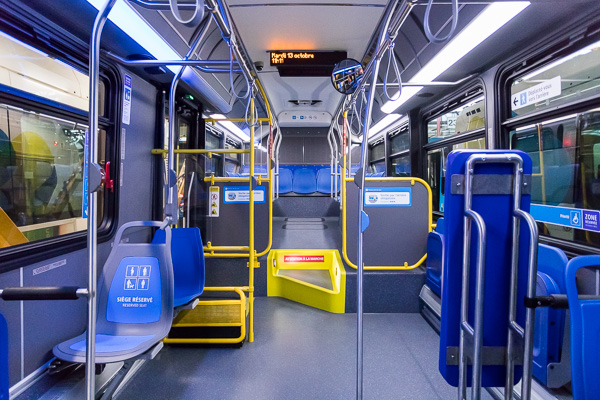
If you’ve been on a bus in the last few months, you’ll have noticed COVID-19 signage telling you to get on at the front, keep the front of the bus clear and get off at the back. New buses usually meet different interior designs. We have adjusted the signage to ensure compliance with safety regulations in the new vehicles.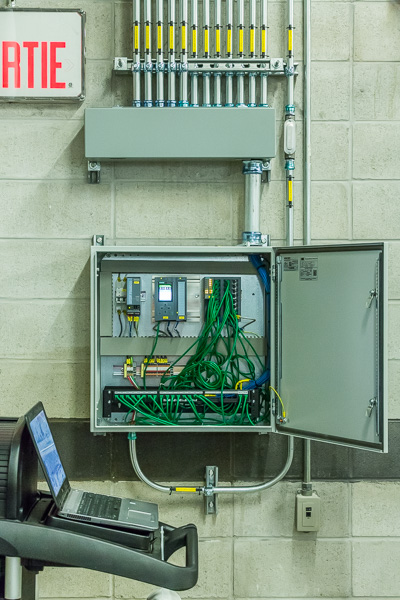
Here we have a signal concentrator, which collects information such as alarm data, electrical data and charge dates from the chargers and sends them to the SCADA system.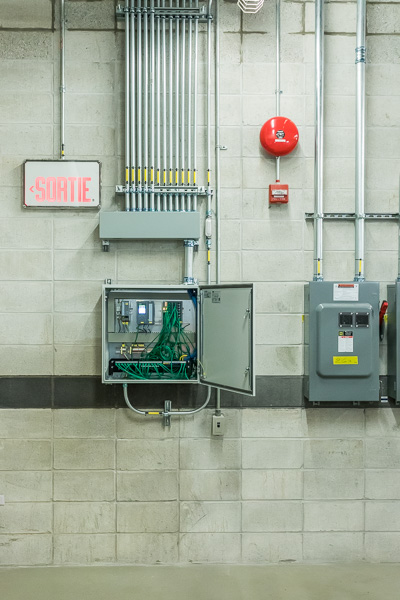
This equipment is maintained by our automation engineer.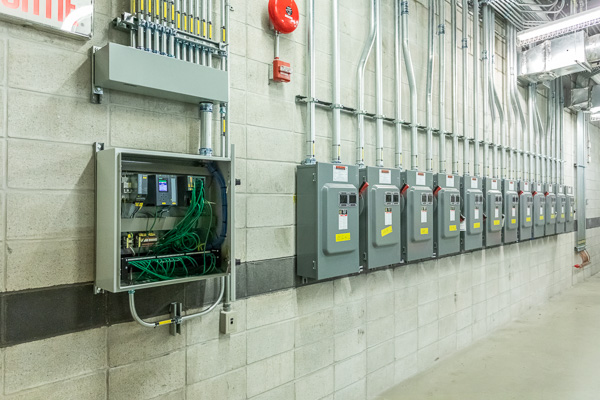
Next to it, we have the 12 disconnectors, which are used to cut the power to the chargers when the infrastructure maintenance team needs to work on them. When conducting maintenance, a lockout procedure is carried out with this equipment to ensure employee safety.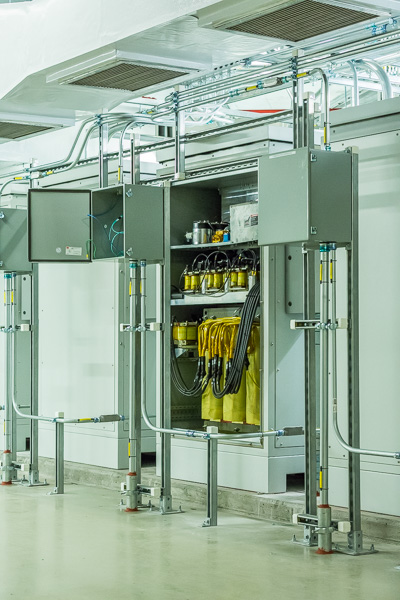
Pictured here is the back of a charger, showing its internal components. The bus chargers convert alternating current (AC) to direct current (DC) and adjust the voltage. There are also electronic components that control the equipment.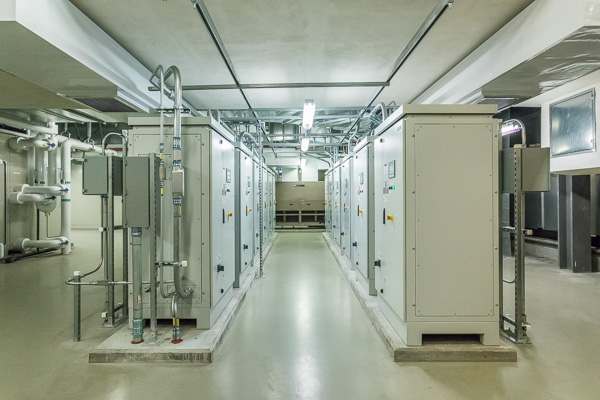
These are the 12 chargers that recharge buses in the four main electrically equipped aisles. At the very back of the room, you can see the ventilation and air conditioning system. This is needed to control the room’s temperature, as the chargers emit quite a bit of heat.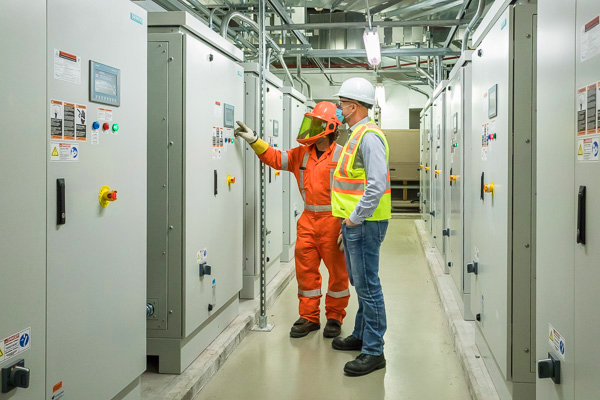 Each charger has a touch screen where you can view information on the equipment.
Each charger has a touch screen where you can view information on the equipment.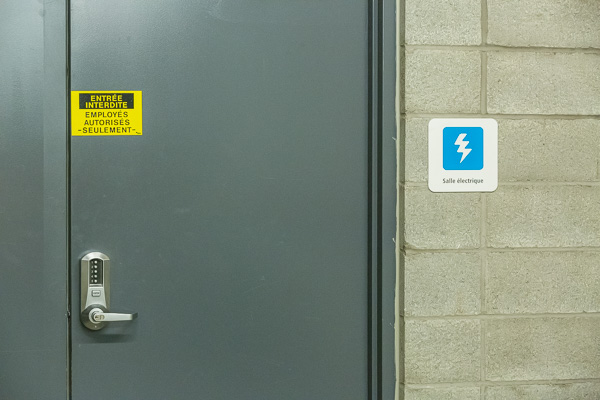
This is the electrical room.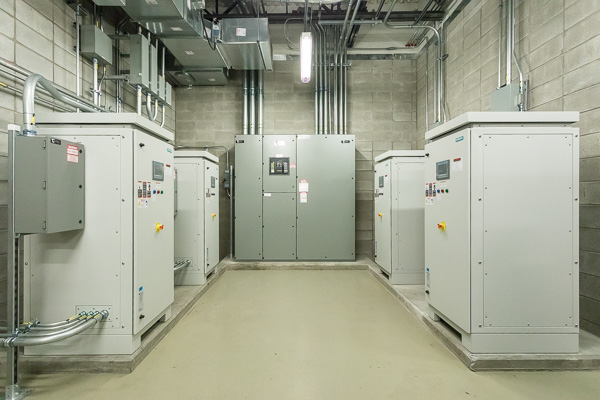
Pictured are four 50-kW chargers (0041) that provide charges to one bus garage aisle and the maintenance area. At the back is the distribution cabinet that powers the chargers.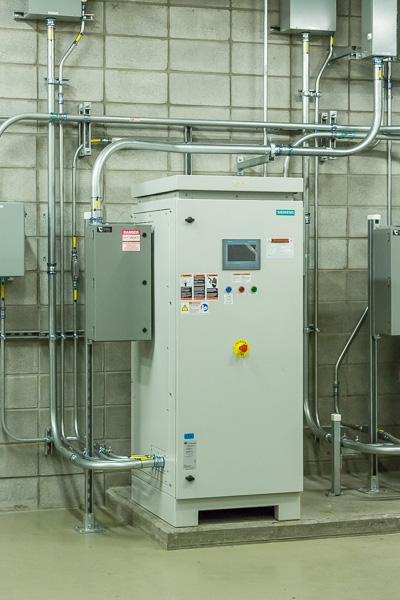
A charger, in the electrical room.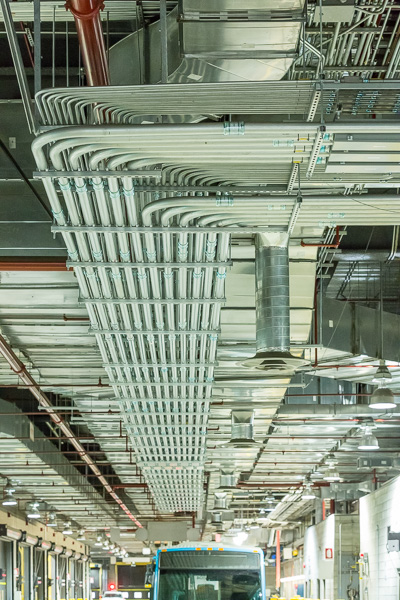
Over 50 kilometres of cabling and conduits run along the ceiling of the Stinson bus garage.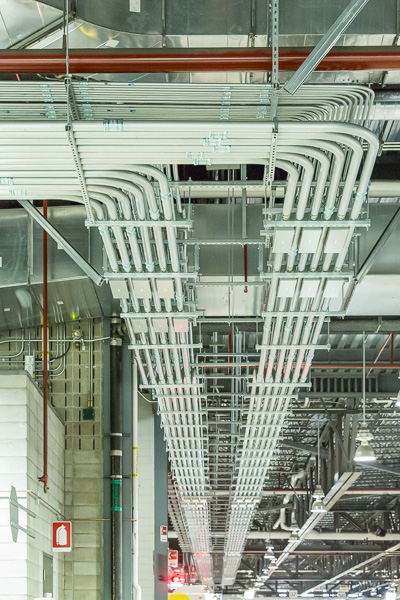
Over 50 kilometres of cabling and conduits run along the ceiling of the Stinson bus garage.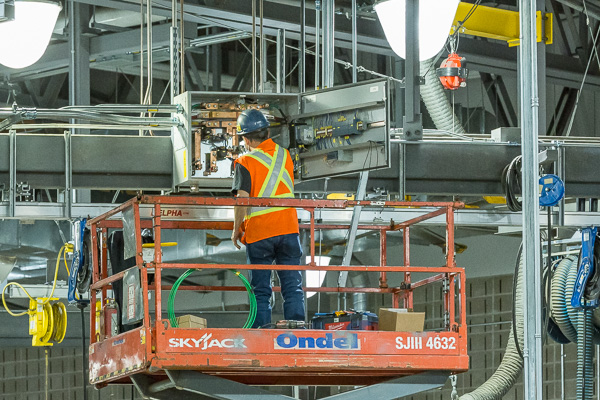
Here, a worker tests a satellite unit installed in the maintenance area.
